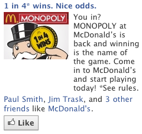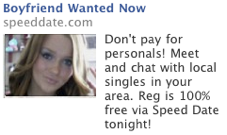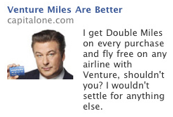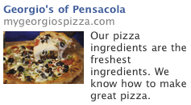The web’s been buzzing lately about the power of online display advertising to drive branding. Whether brand building is an acceptable substitute for direct response metrics is highly debatable, but if you’re going to go the branding route with your ads, here are a few things to keep in mind:
1) Branding requires repetition.
Very, very few non-direct ads have ever worked with only one exposure. In fact, I can only think of two:
 Tony Schwartz & BBDO’s “Daisy” television ad for Lyndon Johnson, which aired only once and is generallycredited with changing the outcome of that election, and
Tony Schwartz & BBDO’s “Daisy” television ad for Lyndon Johnson, which aired only once and is generallycredited with changing the outcome of that election, and- Theodore MacManus’s “The Price of Leadership” print ad for Cadillac, which ran in the Saturday Evening post just once, but was still remembered and actively requested by readers into the 1950s.
Everything else in branding required (and requires) repetition — multiple exposures to the same person over time. Those of us who grew up in the 80s don’t remember Mr. Whipple and his Charmin toilet paper because the guy was so damn relevant to our lives; we remember him because you could watch TV without seeing his face!
And, yes, for your branding-haters out there, Mr. Whipple did indeed help sell a crapload of toilet paper (pun intended).
So if you’re trying to Brand on Facebook, do as much as you can to ensure your impressions stay high for the same Facebook users. And expect to keep it up over months or a year.
2) It’s easier to pull a response out of people than to push emotions into them.
 Take this McDonald’s Monopoly Ad from Facebook. It got my attention right away not with the headline, or the snazzy graphics and bright colors, and certainly not with the body copy. It got my attention mostly because I have very strong memories already attached to this McDonald’s promotion and this ad acts as much as a nostalgia-driven ad as a standard promotional campaign.
Take this McDonald’s Monopoly Ad from Facebook. It got my attention right away not with the headline, or the snazzy graphics and bright colors, and certainly not with the body copy. It got my attention mostly because I have very strong memories already attached to this McDonald’s promotion and this ad acts as much as a nostalgia-driven ad as a standard promotional campaign.
Now, the point isn’t so much that you should use nostalgia in your ads, but that you should attempt to create ads capable of calling forth an emotional response based on viewers’ lived experience. If you’re branding, there has to be some level of recognition and emotional frisson involved, if the customer will have any chance of recalling your message when it’s needed.
Here’s an example:
Now, as a direct response ad, this thing really shouldn’t be showing up on my Facebook page, as it’s a dating site for singles and my profile clearly shows me as married. I’m just not interested in that service.
But as a branding campaign, I very well might recommend the service to a single friend — but ONLY if I’ve ever bothered to pay attention to the ad AND if it’s made enough of an emotional impact on me that I’d actually recall it.
Fortunately for this company, I’m familiar enough the concept of speed dating, and intrigued enough with the business model of video speed dating over the internet, and taken aback enough to see a dating site ad on my page, to rememember speeddating.com should I ever have the occasion to recommend it. And that’s where branding pays off.
3) You’ll probably want a lot more touch-points than just Facebook.
Facebook is a great way to remind people of your brand and your current campaign. But Facebook ads are specifically designed to be unintrusive to the user experience. That means it’s a lot easier to use an intrusive media like TV or Radio (or at least Billboards) to get my attention first, and Facebook as an helpful reminder, than to have Facebook ads carry the entire branding load.
This TV ad for CapitalOne Venture Miles is a great example of that:
You notice it not just because Alex Baldwin is in the ad, you notice it because you’ve already seen the TV commercial. Likewise, I didn’t take time to read this (kind of lame) Facebook ad for a pizza joint because it was so well done; I read it because it was for a local pizza joint that I recognized that has great signage on a road I drive by almost daily.
4) It’s always the message that matters most
Granted, this is a copywriter’s perspective, but it’s not enough just to run a branding campaign in order to “get your name out.” You have to attach something meaningful and relevant to the brand, too. And that means having a message worth advertising to begin with.
And in this sense, it’s worth comparing the Capital One ad with the Georgio’s Pizza ad. Capital One tells me they’ll give me double miles with no black outs and no BS. Ok got it. I may not be in the market for a new credit card today, but if I do decide to switch cards, I’ll probably at least look into Capital One. Their ads will have put the brand on my short list based on a relevant brand offer.
Georgio’s Pizza simply says that their pizzas are the best, with the freshest ingredients. Really? That’s the best they could come up with? Not buying it. The message lacks credibility. Now if they said something like “Real, wood-fired pizzas cooked with home-made sauce, dough, and whole milk-fat mozzarella,” well, then maybe I’d believe them. But simpy claiming to be the best, or to have fresh ingredients? What about that isn’t something that even Domino’s won’t try to claim?
So there you it: 4 solid pointers for switching from DM to Branding-style Facebook Ads. I’m not recommending that you make that switch, just that you keep these principles in mind if you DO decide to switch.





